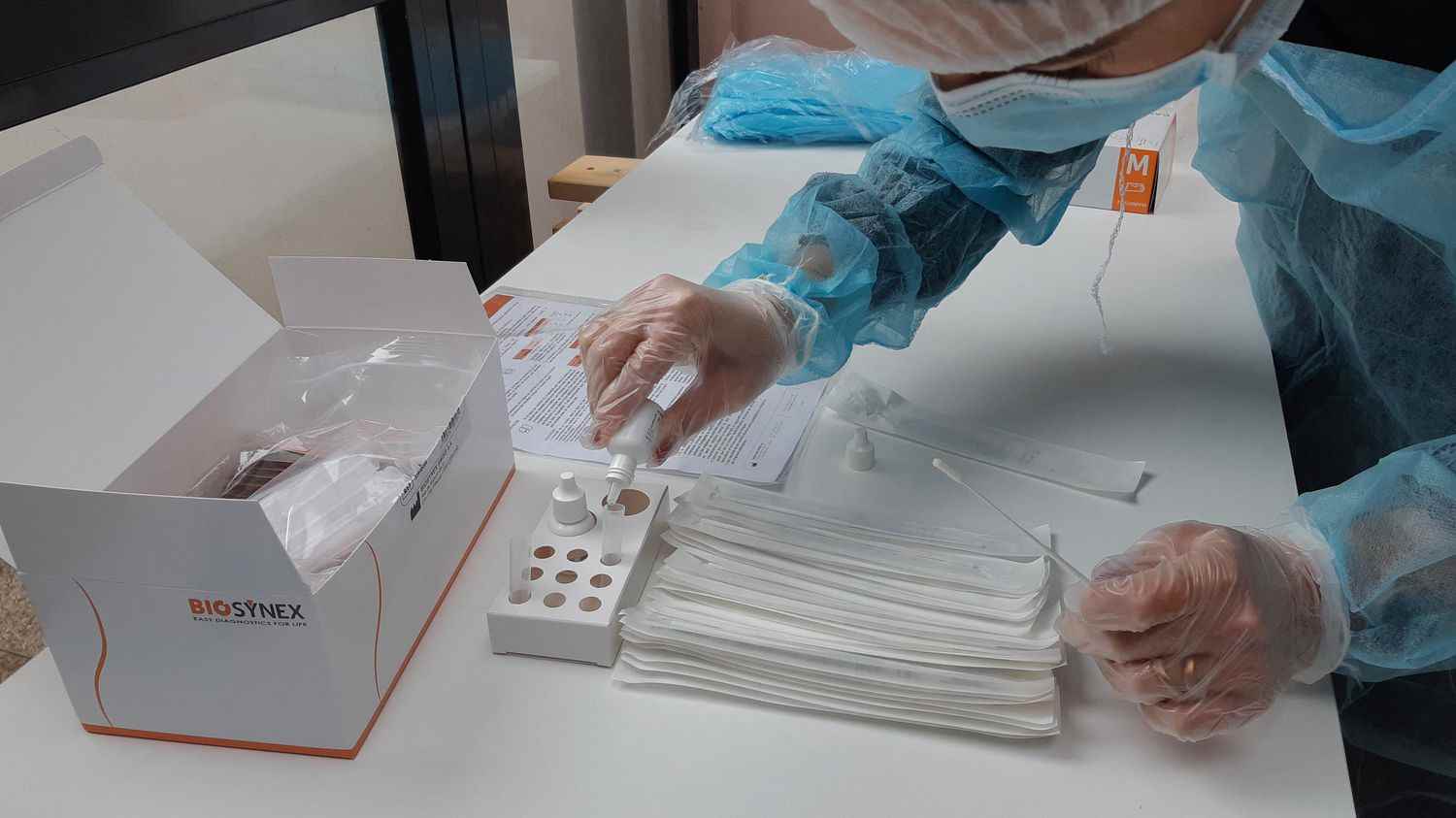Two letters and a number that worry. The BA.5 sub-variant, resulting from mutations of the Omicron variant, is singled out by the health authorities in the resumption of the Covid-19 epidemic in France. According to a bulletin from Public Health France dated June 23, the detection of this sub-variant is in “sharp rise” : it represented 41% of contaminations in mid-June, against 23% the previous week. The next bulletin, expected on Thursday June 30, could even confirm that BA.5 has become the majority in the country.
While France is once again faced with rising epidemic indicators and exploding contamination – nearly 80,000 new daily cases on average over the past seven days -franceinfo takes stock of the specificities of the BA.5 sub-variant.
A subvariant first identified in South Africa
Like the Omicron variant, first detected in South Africa in November 2021, the BA.4 and then BA.5 subvariants were reported by South African researchers in early May. But beware: this does not mean that it is in this region that these sub-variants appeared. South Africa is in fact one of the few nations to routinely carry out genetic sequencing of the virus, “this that other countries have stopped doing”underlined at the beginning of May TEdros Adhanom Ghebreyesus, head of the World Health Organization (WHO).
Until the beginning of 2022, the BA.2 sub-variant of Omicron accounted for the majority of cases detected worldwide (and 99% of cases recorded in France at the end of April). But the latest mutations have gradually taken precedence, and are for example responsible, according to the WHO, for the fifth epidemic wave that South Africa experienced from the end of April.
An even more contagious sub-variant
If BA.5 worries the international community so much, it is because it has higher contagiousness rates than its predecessors. Blame it on two mutations that affect his Spike protein, the one that allows the virus to enter our cells. The L452R mutation increases its transmissibility, causing it to be approximately 20% more contagious than the BA.2 subvariant. This would explain the clear expansion of BA.5, noted by Public Health France in its latest note. The other mutation, called F486, “is associated with reduced neutralization of antibodies”explained epidemiologist Antoine Flahault in mid-May to The Dispatch. As the specialist points out, it is this mutation that can make current vaccines less effective against the BA.4 and BA.5 subvariants.
“It seems that these variants spread more quickly (…) because they escape more immunity acquired by vaccination as by infection, confirmed to franceinfo Samuel Alizon, epidemiologist and research director at the CNRS. A phenomenon that combines with another variable, already well known: the immunity offered by vaccines naturally decreases over time, which makes us more vulnerable to the virus, as well as to serious forms of the disease.
Symptoms caused by BA.5 last longer
Judging from the South African case, the dangerousness of BA.5 would be comparable to other Omicron sub-variants. A small increase in hospitalizations was noticed, with a slightly lower fatality rate, as noted by the team of doctor Wasiila Jassat, in a study cited by the scientific journal Nature (in English). However, it should be remembered that the fatality rate depends on other external factors, independent of the form of the virus, such as the vaccination coverage of a population and the state of a country’s hospital system.
The big difference with this sub-variant is the duration of symptoms, which can take up to ten days to resolve, compared to four days for Omicron’s BA.1 sub-variant, as noted by the doctor and France Televisions journalist Damien Mascret. In addition to the now well-known symptoms of Covid-19, such as fever, cough, sore throat and unusual fatigue, patients infected with the BA.5 subvariant may have a runny nose, but also suffer from nausea and vomiting.
Specific vaccines are in preparation
To make current vaccines more effective against new variants, laboratories are on a war footing to develop products more suited to the Omicron variant. This is the case of Pfizer and BioNTech, which recently welcomed (in English) of their latest vaccine candidate. A version that allows, according to its designers, “an increase of 13.5 and 19.6 times” of its efficacy against the BA-1 subvariant of Omicron, when used in the fourth dose. The studies also show that this improvement is valid for the BA.4 and BA.5 strains, but to a lesser extent. “We will continue to collect data [sur ces sous-variants] in the next weeks”said the two companies.
In France, the rise in power of the BA.5 sub-variant is in any case pressing the health authorities. While the government recommends, without imposing it, the wearing of a mask in closed and “promiscuous” places, the Ministry of Health is mainly focusing on the second vaccination campaign. The latter has been open since April 7 to people aged 60 and over, with or without commorbidities, as well as people severely immunocompromised. But in the opinion of Public Health France, this campaign “remains markedly insufficient” and therefore does not prevent the number of hospitalizations from climbing, as has been the case for several weeks.
